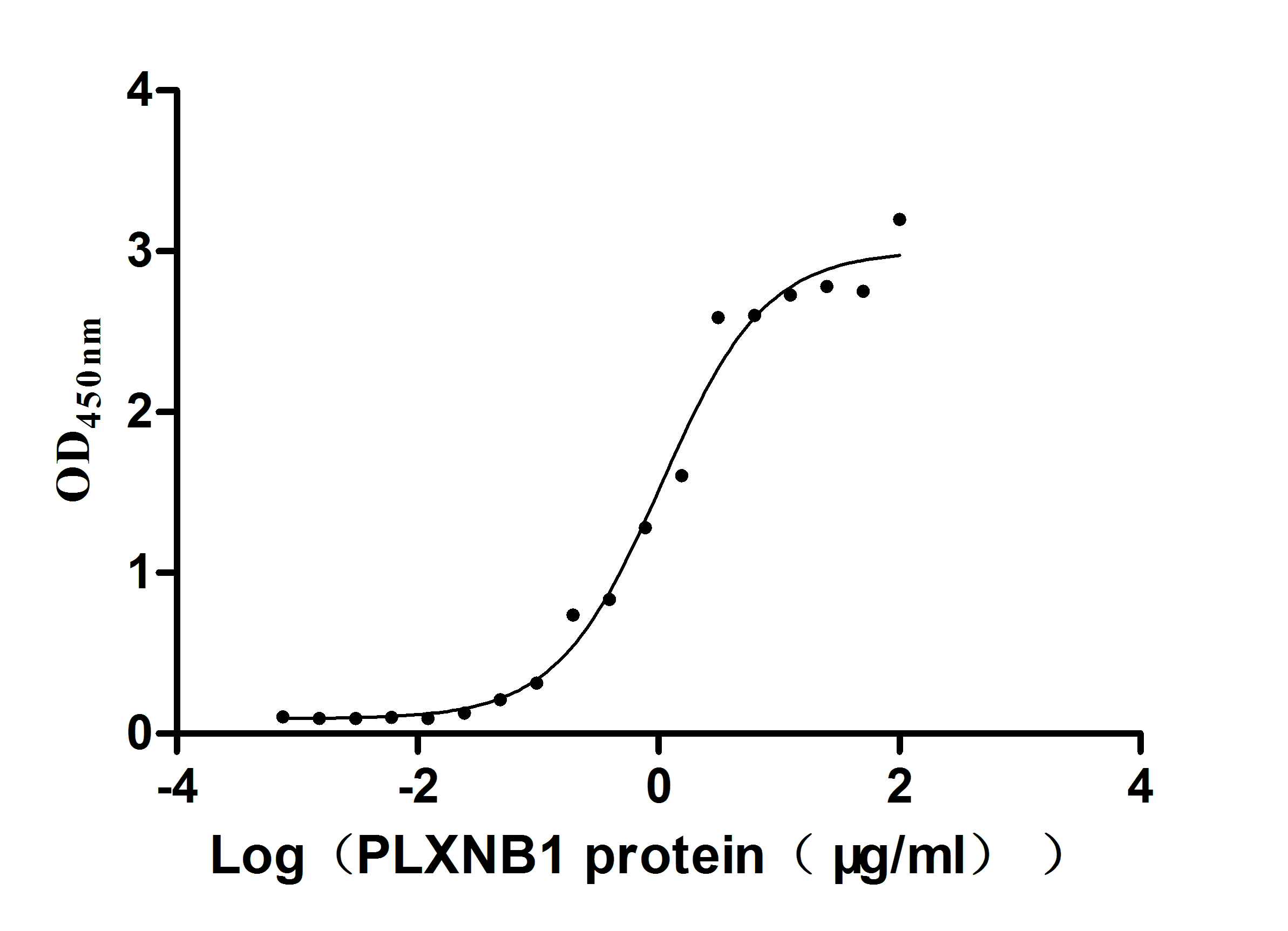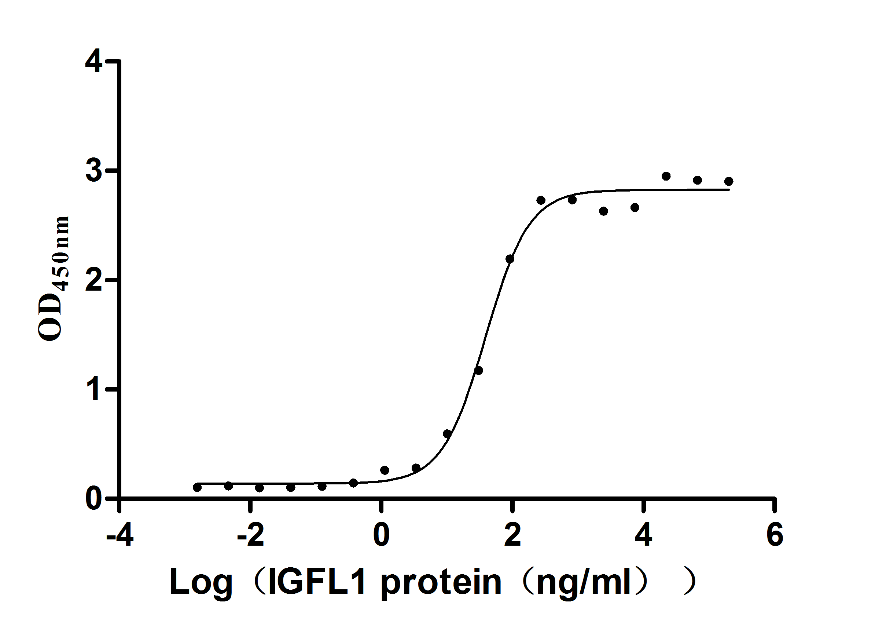Recombinant Mouse Egl nine homolog 2 (Egln2)
-
中文名称:小鼠Egln2重组蛋白
-
货号:CSB-YP849679MO
-
规格:
-
来源:Yeast
-
其他:
-
中文名称:小鼠Egln2重组蛋白
-
货号:CSB-EP849679MO
-
规格:
-
来源:E.coli
-
其他:
-
中文名称:小鼠Egln2重组蛋白
-
货号:CSB-EP849679MO-B
-
规格:
-
来源:E.coli
-
共轭:Avi-tag Biotinylated
E. coli biotin ligase (BirA) is highly specific in covalently attaching biotin to the 15 amino acid AviTag peptide. This recombinant protein was biotinylated in vivo by AviTag-BirA technology, which method is BriA catalyzes amide linkage between the biotin and the specific lysine of the AviTag.
-
其他:
-
中文名称:小鼠Egln2重组蛋白
-
货号:CSB-BP849679MO
-
规格:
-
来源:Baculovirus
-
其他:
-
中文名称:小鼠Egln2重组蛋白
-
货号:CSB-MP849679MO
-
规格:
-
来源:Mammalian cell
-
其他:
产品详情
-
纯度:>85% (SDS-PAGE)
-
基因名:
-
Uniprot No.:
-
别名:Egln2Egl nine homolog 2; EC 1.14.11.29; Falkor; Hypoxia-inducible factor prolyl hydroxylase 1; HIF-PH1; HIF-prolyl hydroxylase 1; HPH-1; Prolyl hydroxylase domain-containing protein 1; PHD1
-
种属:Mus musculus (Mouse)
-
蛋白长度:full length protein
-
表达区域:1-419
-
氨基酸序列MDSPCQPQAL NQALPQLPGS VSESLESSRA RMGVESYLPC PLLPAYHRPG ASGEASAGNG TPRTTATATT TTASPLREGF GGQDGGELWP LQSEGAAALV TKECQRLAAQ GARPEAPKRK WAKDGGDAPS PSKRPWARQE NQEAKGESGM GCDSGASNSS SSSSNTTSSS GEASARLREE VQPSAPERLA LDYIVPCMRY YGICVKDNFL GAVLGGRVLA EVEALKWGGR LRDGQLVSQR AIPPRSIRGD QIAWVEGHEP GCRSIGALMA HVDAVIRHCA GRLGNYVING RTKAMVACYP GNGLGYVRHV DNPHGDGRCI TCIYYLNQNW DVKVHGGLLQ IFPEGRPVVA NIEPLFDRLL IFWSDRRNPH EVKPAYATRY AITVWYFDAK ERAAARDKYQ LASGQKGVQV PVSQPTTPT
-
蛋白标签:Tag type will be determined during the manufacturing process.
The tag type will be determined during production process. If you have specified tag type, please tell us and we will develop the specified tag preferentially. -
产品提供形式:Lyophilized powder
Note: We will preferentially ship the format that we have in stock, however, if you have any special requirement for the format, please remark your requirement when placing the order, we will prepare according to your demand. -
复溶:We recommend that this vial be briefly centrifuged prior to opening to bring the contents to the bottom. Please reconstitute protein in deionized sterile water to a concentration of 0.1-1.0 mg/mL.We recommend to add 5-50% of glycerol (final concentration) and aliquot for long-term storage at -20℃/-80℃. Our default final concentration of glycerol is 50%. Customers could use it as reference.
-
储存条件:Store at -20°C/-80°C upon receipt, aliquoting is necessary for mutiple use. Avoid repeated freeze-thaw cycles.
-
保质期:The shelf life is related to many factors, storage state, buffer ingredients, storage temperature and the stability of the protein itself.
Generally, the shelf life of liquid form is 6 months at -20°C/-80°C. The shelf life of lyophilized form is 12 months at -20°C/-80°C. -
货期:Delivery time may differ from different purchasing way or location, please kindly consult your local distributors for specific delivery time.Note: All of our proteins are default shipped with normal blue ice packs, if you request to ship with dry ice, please communicate with us in advance and extra fees will be charged.
-
注意事项:Repeated freezing and thawing is not recommended. Store working aliquots at 4°C for up to one week.
-
Datasheet :Please contact us to get it.
靶点详情
-
功能:Prolyl hydroxylase that mediates hydroxylation of proline residues in target proteins, such as ATF4, IKBKB, CEP192 and HIF1A. Target proteins are preferentially recognized via a LXXLAP motif. Cellular oxygen sensor that catalyzes, under normoxic conditions, the post-translational formation of 4-hydroxyproline in hypoxia-inducible factor (HIF) alpha proteins. Hydroxylates a specific proline found in each of the oxygen-dependent degradation (ODD) domains (N-terminal, NODD, and C-terminal, CODD) of HIF1A. Also hydroxylates HIF2A. Has a preference for the CODD site for both HIF1A and HIF2A. Hydroxylated HIFs are then targeted for proteasomal degradation via the von Hippel-Lindau ubiquitination complex. Under hypoxic conditions, the hydroxylation reaction is attenuated allowing HIFs to escape degradation resulting in their translocation to the nucleus, heterodimerization with HIF1B, and increased expression of hypoxy-inducible genes. EGLN2 is involved in regulating hypoxia tolerance and apoptosis in cardiac and skeletal muscle. Also regulates susceptibility to normoxic oxidative neuronal death. Links oxygen sensing to cell cycle and primary cilia formation by hydroxylating the critical centrosome component CEP192 which promotes its ubiquitination and subsequent proteasomal degradation. Hydroxylates IKBKB, mediating NF-kappa-B activation in hypoxic conditions. Also mediates hydroxylation of ATF4, leading to decreased protein stability of ATF4.
-
基因功能参考文献:
- HS-induced PPARalpha-mediated downregulation of PHD1 is a novel pathway for PHD/HIF-1alpha transcriptional regulation. PMID: 29500923
- EglN2 might act as an FBW7 ubiquitin ligase substrate contributing to the progression of triple negative breast cancer. PMID: 28036276
- Selective reduction of PHD1 protein using CRISPR/Cas9 technology reduced both lipid peroxidation and mitochondrial impairment, and attenuated glutamate toxicity in the cultured neurons. PMID: 27148687
- Phd1 deficiency in dendritic cells significantly reduced interleukin-1beta production in response to lipopolysaccharide. Taken together, our results further support the development of selective PHD1 inhibitors for ulcerative colitis, and identify haematopoietic cells as their primary target. PMID: 27981571
- This study provides new information relating to the possible mechanism of therapeutic action of hydroxylase inhibitors that has been reported in pre-clinical models of intestinal and hepatic disease. PMID: 27130823
- PHD1 deficiency promotes hepatic steatosis and liver-specific insulin resistance but does not worsen the deleterious effects of HFD on metabolic homeostasis. PMID: 27094951
- These data identify PHD1 as a regulator of neuronal metabolism and a potential therapeutic target in ischemic stroke. PMID: 26774962
- PHD1 and PHD3 deletions promote angiogenesis in ischemia-injured tissue by increasing HIF1-alpha stability. PMID: 25446011
- Rosiglitazone increases PHD expression in a PPARgamma-dependent manner and that this leads to the commitment of anti-adipogenic proteins to the ubiquitination-proteasomal pathway and to the subsequent induction of adipocyte differentiation. PMID: 24338020
- PHD-1 deficient mouse appears to be the first animal model showing neuroepithelial bodies cell hyperplasia PMID: 23080156
- silencing of PHD-1 attenuates myocardial ischemia/reperfusion injury probably by enhancing HIF-1alpha/beta-catenin/endothelial nitric oxide synthase/nuclear factor-kappaB and Bcl-2 signaling pathway PMID: 21083501
- role for PHD1 as a positive regulator of intestinal epithelial cell apoptosis in the inflamed colon PMID: 20600011
- Loss of PHD1 provided tolerance of hepatocytes to acute hypoxia and protected them against ischemia/reperfusion damage. PMID: 19818783
- Deficiency or antagonism of oxygen sensor Phd1 induces hypoxia by reprogramming basal metabolism. PMID: 18176562
显示更多
收起更多
-
亚细胞定位:Nucleus.
-
组织特异性:Highly expressed in testis, expression was also detected in the heart brain, liver kidney and lung. Expression was lowest in spleen and skeletal muscle. Constitutively expressed during differentiation of C2C12 skeletal myocytes.
-
数据库链接:
KEGG: mmu:112406
STRING: 10090.ENSMUSP00000078966
UniGene: Mm.29978
Most popular with customers
-
Recombinant Human Glypican-3 (GPC3) (G537R), partial (Active)
Express system: Mammalian cell
Species: Homo sapiens (Human)
-
Recombinant Human Tumor necrosis factor ligand superfamily member 9 (TNFSF9), partial (Active)
Express system: Mammalian cell
Species: Homo sapiens (Human)
-
Recombinant Human Plexin-B1 (PLXNB1), partial (Active)
Express system: Mammalian cell
Species: Homo sapiens (Human)
-
Recombinant Human T-cell surface protein tactile (CD96), partial (Active)
Express system: Mammalian cell
Species: Homo sapiens (Human)
-
Recombinant Human IGF-like family receptor 1 (IGFLR1), partial (Active)
Express system: Mammalian cell
Species: Homo sapiens (Human)
-
Recombinant Macaca fascicularis CD93 molecule (CD93), partial (Active)
Express system: Mammalian cell
Species: Macaca fascicularis (Crab-eating macaque) (Cynomolgus monkey)
-
Recombinant Human Trophoblast glycoprotein (TPBG), partial (Active)
Express system: Mammalian cell
Species: Homo sapiens (Human)
-
Recombinant Human CD81 antigen (CD81), partial (Active)
Express system: Mammalian cell
Species: Homo sapiens (Human)


-AC1.jpg)


-AC1.jpg)














